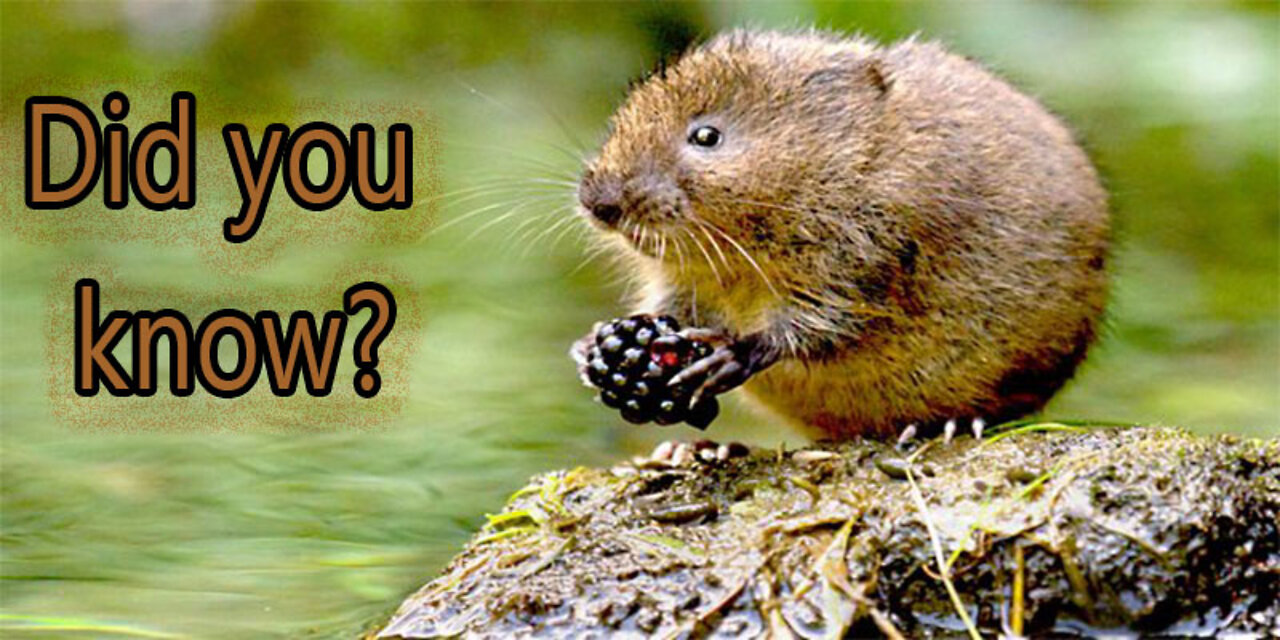Premium Only Content

03-Things you need to know about WATER VOLES_
In this video we take a closer look at, The European Water Vole - one of the UK's favourite mammals.
Water voles were made famous by the book, the Wind in the Willows, where one of the main characters was a water vole named ratty. In the book, and subsequent TV series and films Ratty lives a life of leisure, but that is far from the reality of life for these semi aquatic rodents.
Water voles are the perfect sized meal for many predators, growing to 22cm plus a tail and only to around 220 grams. It is this and there need for a very specific habitat that has led to their populations dropping by more than 90 percent in the UK over the last 40 years. One of their main predators, and a species that should not be in the UK in the first place, is the American mink. These playful relatives of the ferret, escaped and were released by misguided people from fur farms throughout 1960s and seventies. Unfortunately they are ferocious carnivores and are the perfect size to fit into water vole burrows. There are now national campaigns to control mink and it seems to be working as water vole numbers are increasing once more.
As their name suggests water voles build their homes alongside standing or slow flowing freshwater and dig their burrows into the waterside banks. These burrows can go several feet into the ground and often include entrances that are below the waters surface. Water voles are herbivores and collect most of the grass and vegetation that they eat from along the waters edge. 227 different species of plant have been identified in their diet and they sometimes create piles of pre-cut, ready to eat vegetation outside of their burrows.
Water voles do not have webbed feet like some other semi-aquatic mammals but they are expert swimmers, swimming both across the surface and diving beneath it. They can climb as well but this one seems to be a little bit out of practice when it comes to balancing, whoops, well at least no one was filming…
Water voles breed from late march until the end of September and like many other rodents, this can be quite a rapid affair. Each breeding female can produce between 5 and 8 pups, which are born blind and fur-less, in a nesting chamber. These pups grow quickly and can fully weaned from as little as 14 days old. This means that the mother can breed again and it is not uncommon for her to produce 4 litters throughout one breeding season. After breeding stops, the water voles begin to increase their seemingly constant feeding regimes to build up food stores and fat reserves to survive the colder months.
#watervole
#UKwildlife
#wildlifedocumentary
Some of the footage in this video was obtained using creative commons attribution licences. The original video and its licence can be found here: https://www.youtube.com/watch?v=xr65l...
-
 1:00
1:00
KJRH
3 years agoWhat you need to know about sirens
1.96K2 -
 22:09
22:09
MYLUNCHBREAK CHANNEL PAGE
8 hours agoThe 5 Eyes Are Watching You - Pt 1
11K19 -
 LIVE
LIVE
sophiesnazz
2 hours ago $1.22 earnedTIME TO WIND PEOPLE UP !socials
150 watching -
 LIVE
LIVE
OhHiMark1776
3 hours ago🟢07-26-25 ||||| Halo Multiplayer Rumble: No. 16 ||||| Halo MCC (2019)
44 watching -
 LIVE
LIVE
GamerGril
3 hours agoThe E-Gril Within | First Time Play Through | Saturday Spookfest
182 watching -
 18:22
18:22
Liz Wheeler
4 hours agoWhat Ghislaine Maxwell Knows
5.97K12 -
 LIVE
LIVE
cosmicvandenim
6 hours agoWARZONE - Kenetik Energy Announcement - Discord Spy Bots
110 watching -
 1:05:51
1:05:51
Jeff Ahern
4 hours ago $16.99 earnedThe Saturday Show with Jeff Ahern
93.6K12 -
 LIVE
LIVE
Misfit Electronic Gaming
1 hour ago"LIVE" RUMBLE HALO Spartans "Halo MCC" 23 Followers to go till we hit !000 RUMBLE TAKEOVER
11 watching -
 1:57:13
1:57:13
Film Threat
5 hours agoLIVE FROM SAN DIEGO COMIC-CON! (Saturday) | Film Threat Live
12.6K